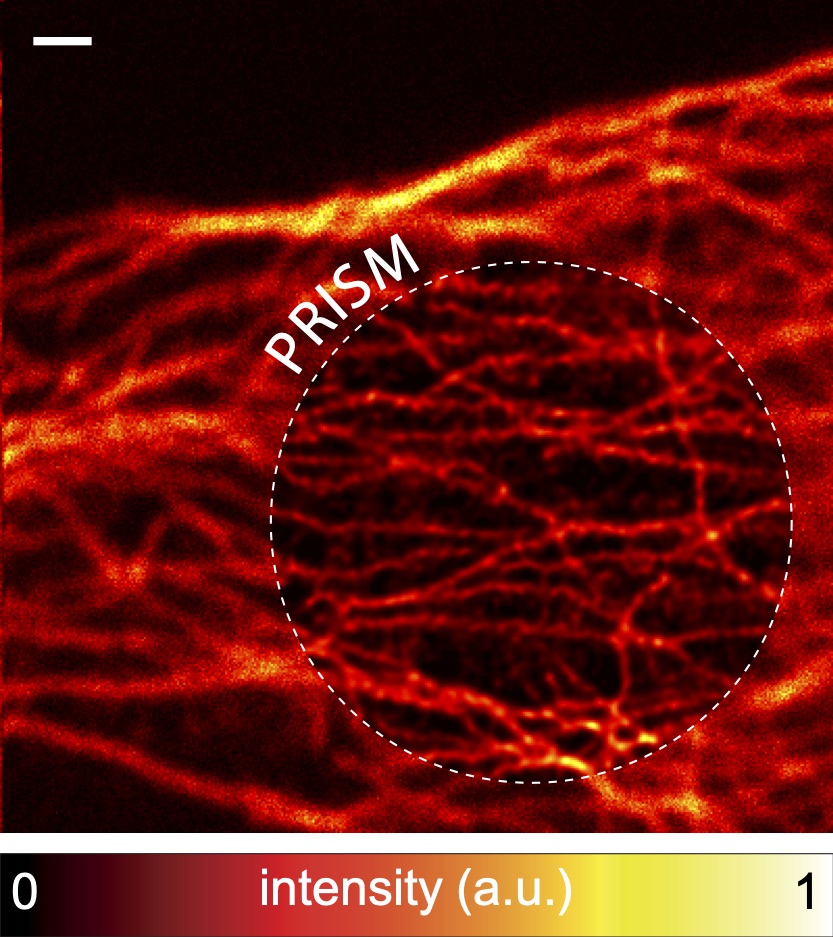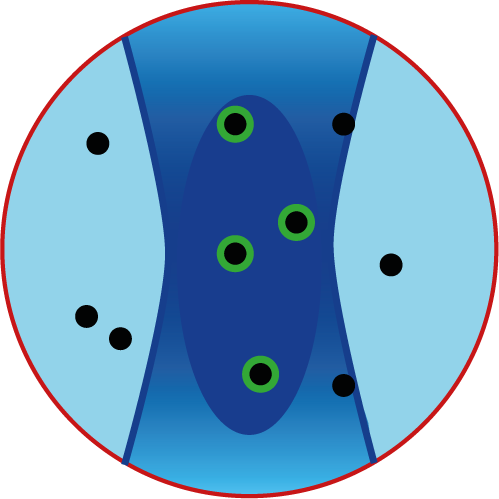 | Image Processing and AnalysisThe job of image restoration is to figure out what the instrument is actually trying to tell you (Prof. Roy Pike).The aims of this set of projects is to implement computational algorithms able to improve the quality/resolution of a microscopy image/dataset (e.g., via deconvolution), and to extract from it the maximum amount of information, both from the biological (e.g., biomolecules localization/concentration) content and the optical system content (e.g., spatial resolution, optical aberrations). Read More. |
Main Projects
 | Single-Photon Laser-Scanning Microscopy with SPAD Array DetectorWhen you consider humans on the average, we have one brain, one heart, two lungs, two kidneys,….one ovary, one testicle (Prof. Steven M. Block).Typically, laser scanning microscopy provides a single averaging intensity value for each pixel/position of the sample, i.e., a value for each detection volumes. Surely, this averaging/integrating process discards inportant information, such as the temporal dynamics, and the spatial distribution of detection volume image. To overcoem this limitation, we have recently introdued a single-photon detector array able to register photon one at a time. In short, the detector allows to tag photons temporally (with picoseconds preciosion) and spatially (with nanometres precision). The aims of this set of projects is to open to a new imaging paradigma able to take advantags of this new single-photon dataset. We call this paradigma single-photon microscopy. Read More. |
 | Time-Resolved STED MicroscopyIf I have seen further it is by standing on the shoulders of Giants (Isaac Newton).By considering a microscope as a multi-channel system, thus able to trasmit not only spatial information but also other type of information, e.g., time, wavelenght, and polarzation, it has been proposed to use use these alternative chaneels to improve the spatail resolution of the microscope. Starting from this very general concept, we showed how in STED microscopy the temporal channel, and in particular the the ability to register the photon-arrival time of the fluorescent photon, can be used to improve the spatial resolution without increasing the intensity of the STED beam. The aims of this set of projects is to further explore this space-time duality and to find other applications of the above information concept to augment the characteristics of STED microscopy. Read More. |
 | Fluorescence Fluctuation Spectroscopy with SPAD Array DetectorAn experiment is a question which science poses to Nature and a measurement is the recording of Nature’s answer (Prof. Max Karl Planck).By measuring and analyzing the fluorescence intensity fluctuations generated by biomolecules moving in-and-out of a confocal microscope detection volume, parameters such as diffusion coefficients, molecular concentrations, and the fluorescence brightness can be calculated. The (sub)microsecond temporal resolution and the low background typically needed for FCS are usually obtained by employing a point-detector. Consequently, important spatial information of the emission signal is lost. To address this limitation, we recently built a confocal laser scanning microscope in which the traditional single-element detector was replaced with a 5x5 pixel single-photon-avalanche-diode array detector. Each pixel of the detector produces almost instantaneously a signal when hit by a fluorescence photon. Consequently, for each pixel, the arrival time of every photon can be registered with sub-nanosecond temporal resolution. In combination with a pulsed laser source, such a setup offers the additional advantage of being able to simultaneously measure the fluorescence lifetime. Read More. |
 | Investigating the dynamics of bio-molecular condensates and organelles by spectroscopy tools and super-resolution imagingOne man’s noise is another man’s signal (Edward W Ng).A critical aspect of all biological processes is their temporal organization at all biological levels, ranging from embryo development, cell/tissue homeostasis, and, in general, all biomolecular functions. Despite the massive improvements in optical resolution, studying temporal processes and biomolecular dynamics is still challenging. We are working towards shining new light into the complex behaviors of single biomolecules and organelles by applying a comprehensive class of novel microscopy methods based on the high throughput of single-photon avalanche diode (SPAD) array detectors. Read More. |
